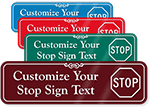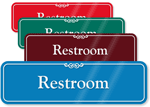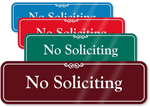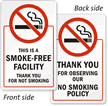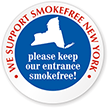Europe’s permissive e-cigarette laws worry the US
The European Parliament has rejected proposals for stricter e-cigarette laws from health officials who say e-cigarettes should be used for medical purposes only. This comparatively permissive approach has now raised questions about the Food and Drug Administration’s pending decision on e-cigarette laws in the U.S.
The FDA may soon issue regulations on nicotine-delivery devices, and manufacturers are peeved. From being non-existent a few years ago, the market for electronic cigarettes has boomed to more than an estimated $650 million a year in Europe. In the US, Wall Street analysts predict that e-cigarette sales will rise to a whopping $1.7 billion this year.
Europe’s new e-cigarette policies
These new regulations form a part of the draft law, known as the Tobacco Products Directive, which aims at filling up a legal vacuum created by this nicotine device, whose sky-rocketing sales have left health regulators unable to catch up. In some areas of Europe, governments have tried to strictly control and even ban e-cigarettes, but successful court actions by e-cigarette companies have not made implementation possible. The new policies exempt e-cigarettes from the tedious and costly certification process required for drugs.

E-cigarettes offer an alternative to smoking, called vaping where users ingest the nicotine in the form of vapors from a heated fluid, instead of smoke from burning tobacco. From Gothamist
E-cigarette manufacturers, who have always fought against medicinal regulations, are now heaving a sigh of relief. Charles Hamshaw-Thomas, corporate affairs director of E-Lites, Britain’s biggest e-cigarette brand by sales volume, said, “This is a fantastic result for public health and the millions of smokers around Europe who are switching to e-cigarettes. Common sense has prevailed.”
However, e-cigarettes will be following the legal limitations imposed on regular cigarettes, including a ban on the sale of such products to people younger than 18 years. Also, there are tight restrictions on advertising and sponsorship after the amendment of the Tobacco Products Directive, approved by Parliament.
US debates e-cigarettes regulations
The FDA’s official website says that as the safety and efficacy of e-cigarettes has yet to be fully studied, consumers are still not aware whether using the product is safe, and whether it has any benefits. Another cause for concern is quality control, with the FDA affirming that some manufacturers are not disclosing all the chemical ingredients in their e-cigarettes correctly, and that the actual amount of nicotine in the cartridge might not match the quantity listed on a cartridge label.
On September 24, 40 state attorney generals signed a letter urging the FDA to assume “immediate regulatory oversight of e-cigarettes, an increasingly widespread, addictive product.”
An earlier report by the Centers for Disease Control and Prevention revealed that a growing number of children were getting hooked on nicotine. The CDC found that the use of e-cigarettes by U.S. students in middle school and high school doubled to 10 percent in 2012 from 4.7 percent a year earlier. E-cigarettes are sold in a broad array of flavors, including cherry, vanilla, and even bubblegum, which might be tempting for youngsters.
Alexander Prokhorov, a smoking cessation expert at Houston’s MD Anderson Cancer Center, worries that the use of e-cigarettes could make conventional smoking an acceptable social behavior. “My major concern is that this will be a gateway behavior, a potential risk of getting kids hooked on nicotine for life,” he said.
The FDA has sent a proposal to the White House Office of Management and Budget, seeking to expand its regulatory authority beyond cigarettes.
Meanwhile, e-cigarette companies say that although they agree with manufacturing standards and age restrictions, it is unfair to impose advertising restrictions. VMR’s Verleur, which makes V2 Cigs, said, “One thing that would be very bad is to lump us in with traditional cigarettes and apply some of the same standards.” His company and other competitors have asked the FDA for meetings to put forth their side of the case.
Category: Smoking Rules

